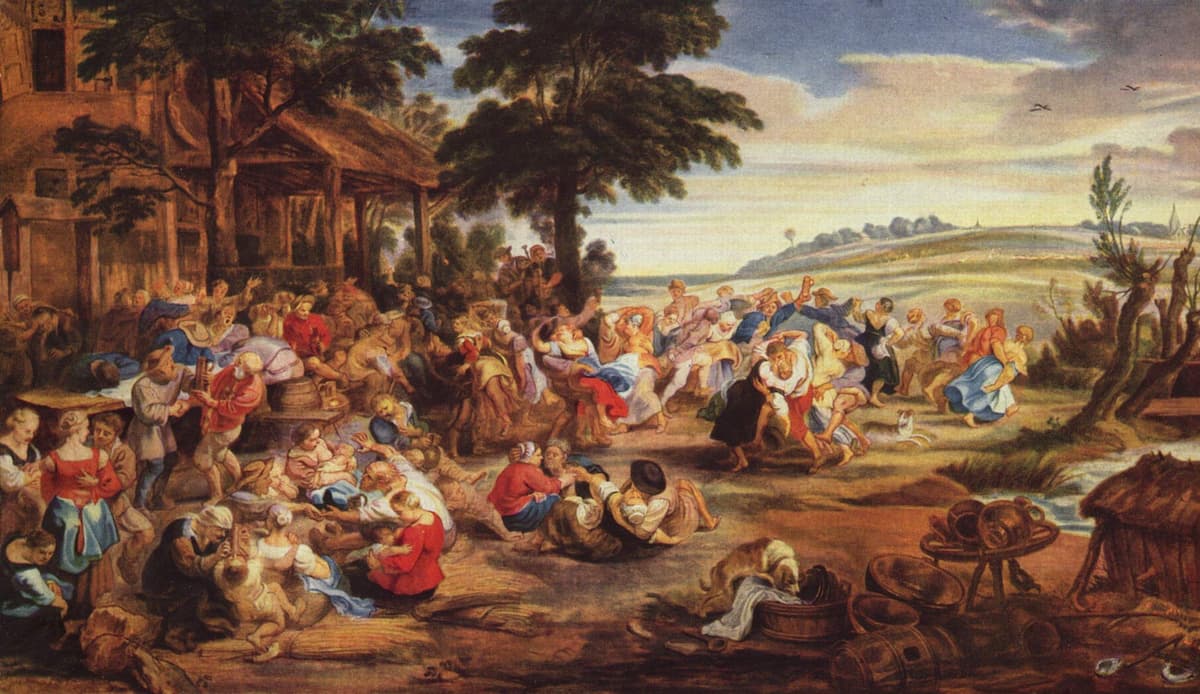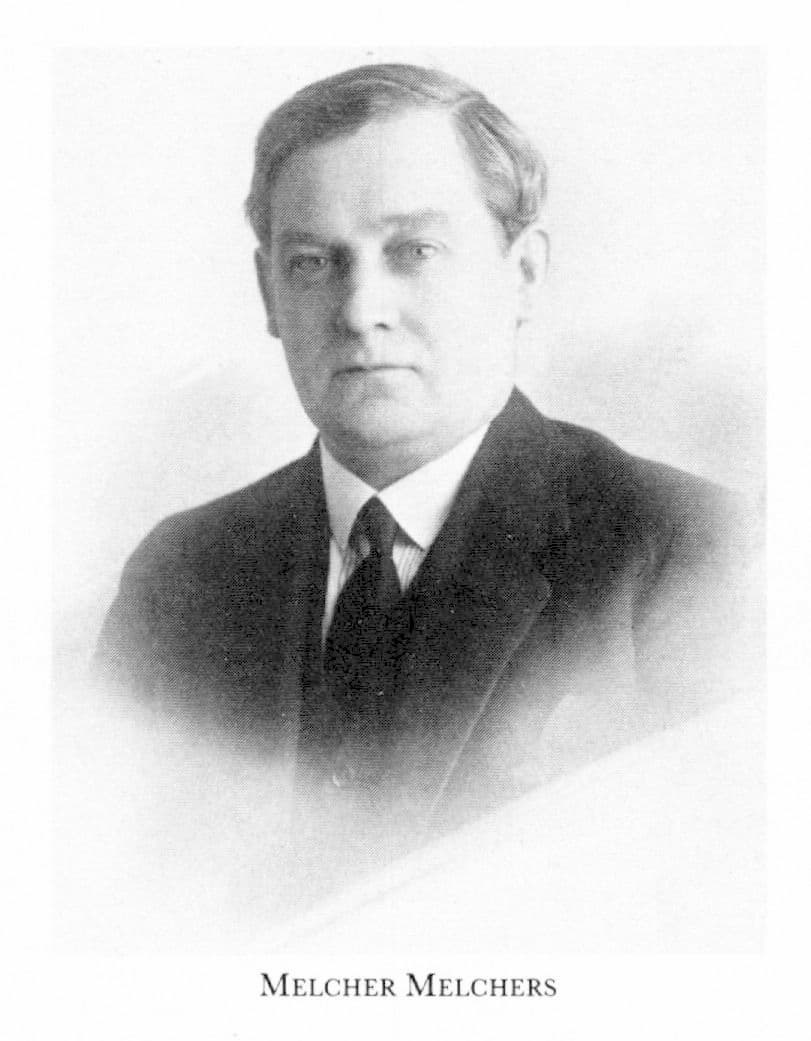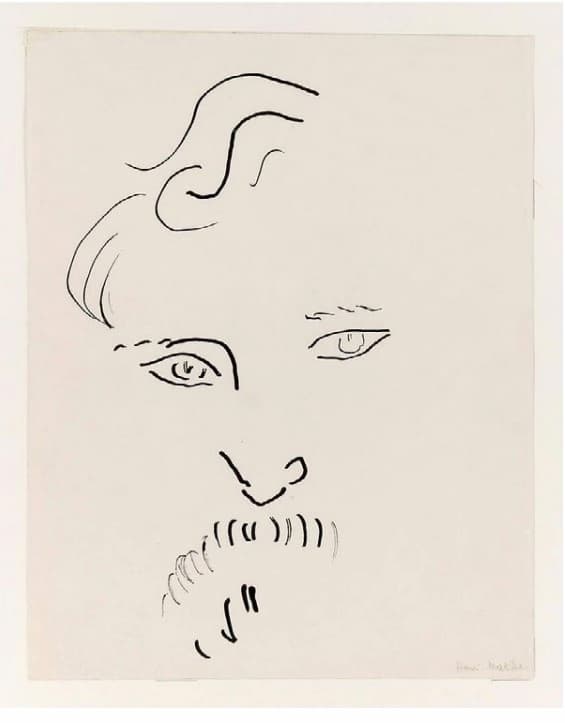Melcher Melchers: La Kermesse Inspired by Peter Paul Rubens
In his frolicking picture La Kermesse, Peter Paul Rubens gives us a village festival that takes over the entire foreground of the painting. Though at one time to be a picture of a village wedding, the lack of an obvious bride and groom makes it seem more like a day for universal bacchanalia. The rustic pastoral has fervent kisses in the foreground and more than one couple heading off for a discrete getaway in the background. At the very back, two bagpipers add to the noise, and in front of them couples attempt to dance… or to kiss…or to kiss and dance.

Rubens: La Kermesse, 1635/1638 (Paris: Louvre)
In the left front center mothers are gathered with their children, there’s an earnest discussion in the left front corner, and, in other places, people have quietly collapsed onto the table, ignoring the people behind them who appear to be singing. In the front right corner, there’s a small hut with a pig’s nose poking out, an old symbol for ‘gula’ or delicacy. It’s a very busy scene and was an inspiration for Swedish composer Melcher Melchers (1882–1961).

Melcher Melchers
Melcher Svensson did his first musical studies at the Conservatory in Stockholm starting at age 14; upon graduation in 1903, had jobs as a violin and viola player in theatre orchestras before going onto south for more study. Stopping first in Brussels to study conducting, he was eventually admitted to the Paris Conservatoire. It was in Paris that he dropped his family name and took on the name Melcher Melchers (as being more French).
He studied with George Casadesus at the Conservatoire and while living in Montparnasse, became friends with artists such as Pablo Picasso, Modigliani, and Matisse.

Henri Matisse: Melcher Melchers, ca. 1917 (Moderna Museet)
In music circles, he knew Germaine Tailleferre and other members of Les Six, as well as Erik Satie. He stayed in Paris during WWI, moving back to Stockholm after the war. He wrote as a music critic and taught at the Conservatory from 1925, holding his post until 1947.
His French training gave his music a French accent, which stood out in the milieu of Swedish music and wasn’t appreciated by his students. Part of his Paris history was his familiarity with the great French museums, hence his knowledge of a large Rubens painting entitled La Kermesse. Painted between 1635 and 1638, the work had been purchased by King Louis XIV in 1665.
Melcher Melchers: La Kermesse (Gävle Symphony Orchestra; Jaime Martín, cond.)
Melcher’s symphonic poem, called ‘quasi-Impressionistic’, was given its debut in 1920 at the Stockholm Concerto Society. Listeners were divided between people who thought it was brilliant and those who thought that the sound was raw and there was a ‘poverty of ideas’ in the piece.
Nevertheless, the joy and warmth of the Rubens original come through in Melcher’s work and can only make us smile.
For more of the best in classical music, sign up for our E-Newsletter
